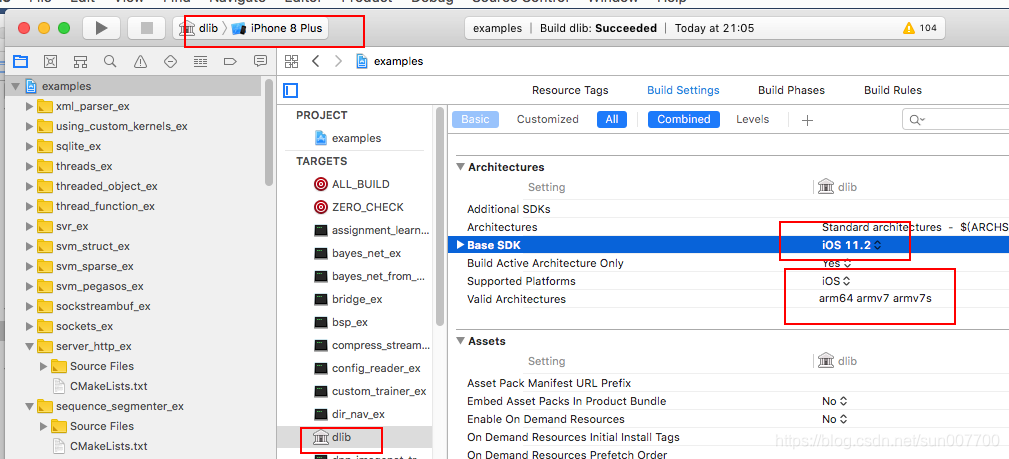macos上使用xcode编译dlib给ios使用
本文共 607 字,大约阅读时间需要 2 分钟。
参考
下载dlib19.16并解压
cd examplesmkdir buildcd buildcmake -G Xcode ..cmake --build . --config Release #这一步等的时间比较长,耐心一点
CMake Error: Xcode 1.5 not supported.错误解决
编译成功以后cd dlib_build/Release
$ pwd
/Users/deyi/Desktop/code/dlib-19.16/examples/build/dlib_build/Release deyideMac:Release deyi$ lslibdlib.a deyideMac:Release deyi$打开examples.xcproject,配置为ios

编译看到

i$ lipo -info libdlib.a
input file libdlib.a is not a fat file Non-fat file: libdlib.a is architecture: arm64 deyideMac:Debug-iphoneos deyi$ pwd /Users/deyi/Desktop/code/dlib-19.16/examples/build/dlib_build/Debug-iphoneos deyideMac:Debug-iphoneos deyi$转载地址:http://fyaa.baihongyu.com/
你可能感兴趣的文章
NLP:从头开始的文本矢量化方法
查看>>
NLP:使用 SciKit Learn 的文本矢量化方法
查看>>
NLTK - 停用词下载
查看>>
nmap 使用总结
查看>>
nmap 使用方法详细介绍
查看>>
nmap使用
查看>>
nmap使用实战(附nmap安装包)
查看>>
Nmap哪些想不到的姿势
查看>>
Nmap扫描教程之Nmap基础知识
查看>>
nmap指纹识别要点以及又快又准之方法
查看>>
Nmap渗透测试指南之指纹识别与探测、伺机而动
查看>>
Nmap端口扫描工具Windows安装和命令大全(非常详细)零基础入门到精通,收藏这篇就够了
查看>>
NMAP网络扫描工具的安装与使用
查看>>
NMF(非负矩阵分解)
查看>>
nmon_x86_64_centos7工具如何使用
查看>>
NN&DL4.1 Deep L-layer neural network简介
查看>>
NN&DL4.3 Getting your matrix dimensions right
查看>>
NN&DL4.7 Parameters vs Hyperparameters
查看>>
NN&DL4.8 What does this have to do with the brain?
查看>>
nnU-Net 终极指南
查看>>